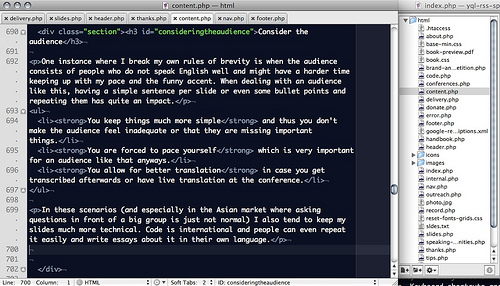

As I said, TextMate is a powerful and wonderful editor, too, but differently powerful and wonderful. This last week I’ve worked exclusively in vim, to test that theory. I realized that, with a little work, perhaps a way could be found to reimplement most of the things I loved about TextMate, in vim. TextMate’s “snippet” feature never clicked for me, and the only times I used it were by accident (when it annoyed me more than it helped me), but I really was hooked on the project browser, and cmd-T, and a few other things. And plugins like rails.vim and fuzzyfinder.vim mean that TextMate no longer has a corner on powerful project navigation.įor the last few weeks I’ve been toying with switching back to vim. Vim 7 supports UI tabs, and a much more powerful auto-completion mechanism than before. There is actually a Mac-friendly GUI version of vim now, MacVim, which actually looks like it belongs on OS X. Sometimes, though, late at night, I would think again of vim.įast forward three years. After a couple of months of reteaching my fingers how to edit text, I was happy. The project drawer was awesome, finding files via cmd-T was super powerful, and smarter auto-completion and snippets promised a new and faster way to pound code. TextMate was (and certainly still is) a fantastic text editor. Sadly, reluctantly, I said good-bye to vim and switched to TextMate. I experimented with emacs, but it never clicked for me, and honestly, emacs on OS X wasn’t all that better than vim at the time. I had recently switched to the Mac (from Linux) and was still using my text editor of choice ( vim), but at the time, vim’s “integration” with OS X was pretty minimal (and that’s putting it optimistically).

Over three years ago, I was faced with a dilemma.


 0 kommentar(er)
0 kommentar(er)
